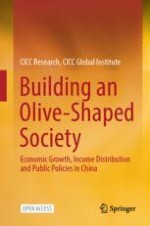Open Access 2024 | Open Access | Buch

Building an Olive-Shaped Society
Economic Growth, Income Distribution and Public Policies in China
verfasst von: CICC Research, CICC Global Institute
Verlag: Springer Nature Singapore
Open Access 2024 | Open Access | Buch

verfasst von: CICC Research, CICC Global Institute
Verlag: Springer Nature Singapore
This open access book offers a comprehensive analysis of China’s way of economic development balancing between efficiency and equity, striving to investigate existing challenges and to discuss the role of fiscal policies and philanthropy to mitigate social inequality. The book analyzes the current overall state and challenges of China's income and wealth distribution and describes the social inequality in specific fields such as labor market, housing markets, education, public health, infrastructure building and carbon emission. This book also explores the implications of long-run trends of macro-asset pricing.
The book is both academically rigorous and readable. This valuable reference will attract readers in economics, public finance and social policy who seek to better understand China’s path of combating social inequality.